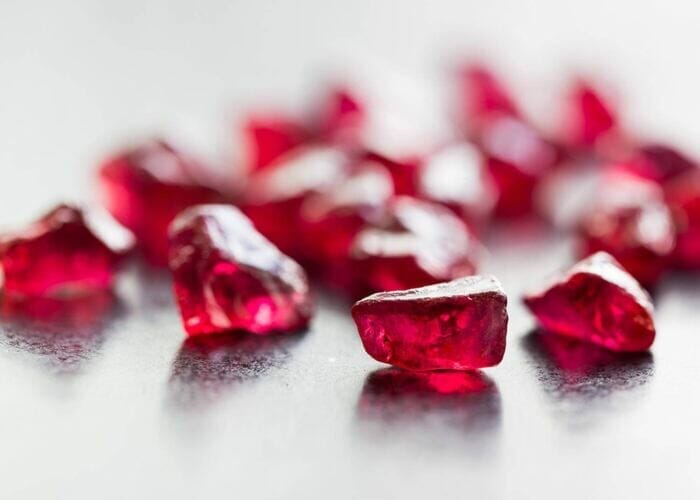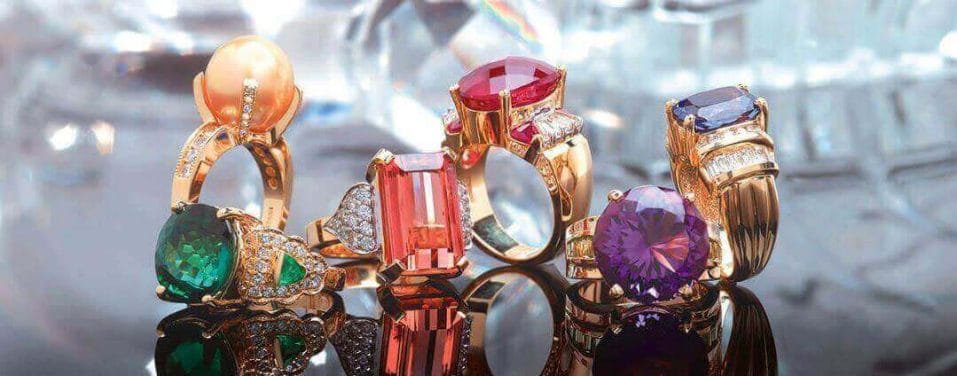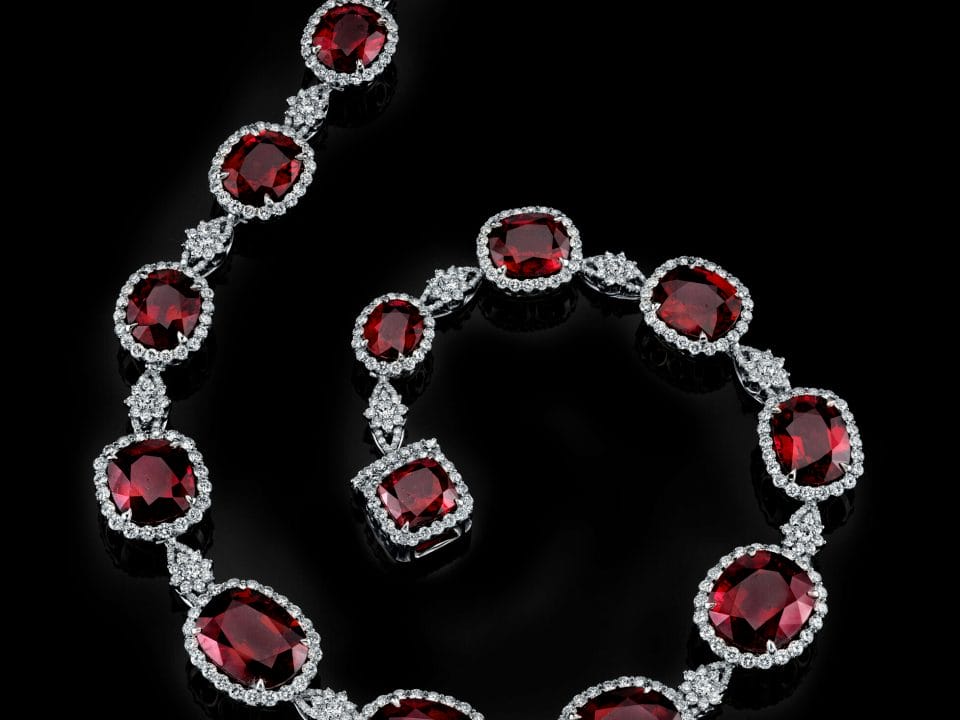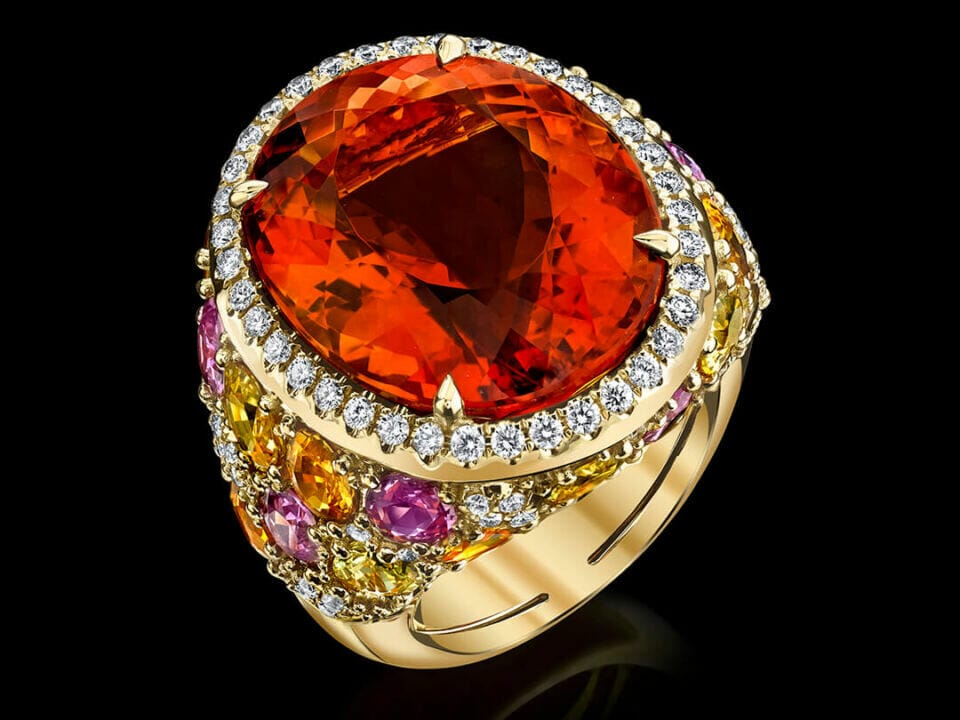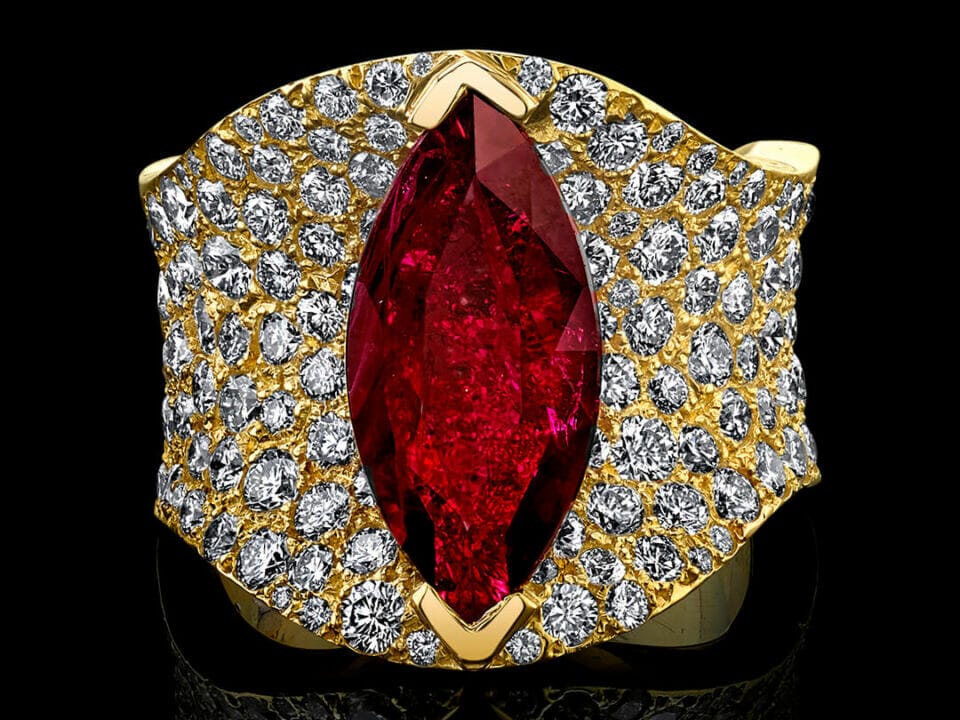Gemstone color owes a little to pigments and a lot to light. Some gems get their color the same way paints receive their color. For example, if you wanted some blue paint for your bedroom, the store clerk would take white paint and add a few drops of blue coloring to it. We call this kind of gem “idiochromatic.” The gemstone color is actually in the stone. For example, if you were to grind up a piece of malachite, the powder would be green.
Most gemstone colors don’t work like paint. Instead, most gems gain color from the way light reacts to their crystal structure. If you were to grind up a sapphire, emerald, garnet, or tourmaline, you would get a white powder. It does not matter what color you see when they are whole, or how dark the color is. The color actually has nothing to do with the physical matter, as a pigment in paint. Instead, it has to do with how light reacts to the crystal.
As you know, white light has all the colors of a rainbow. You can see this when a sunbeam passes through a prism. What comes out is a rainbow; which is white light spread out into its component colors.
When light enters a gem, some of it is absorbed. What comes out is no longer white. That is because light has to contain the full spectrum of the rainbow to be white. If some is absorbed in the gem, what is left has to be the gemstone color.
We call this process “selective absorption.” Each gem absorbs a different part of the light spectrum, a different part of the rainbow, which is why gems appear to be different colors.
This is not a simple concept. Garnets are not red because they absorb everything except red light. If that were the case the gems would be very dark, as red is just a small part of the whole range of color. What happens is that our eyes take this mixture of light and blend it to a single color. Rubies are red and emeralds are green to our eyes, but not if you were to break down the color into a full spectrum.
* From the INTERNATIONAL GEM SOCIETY

